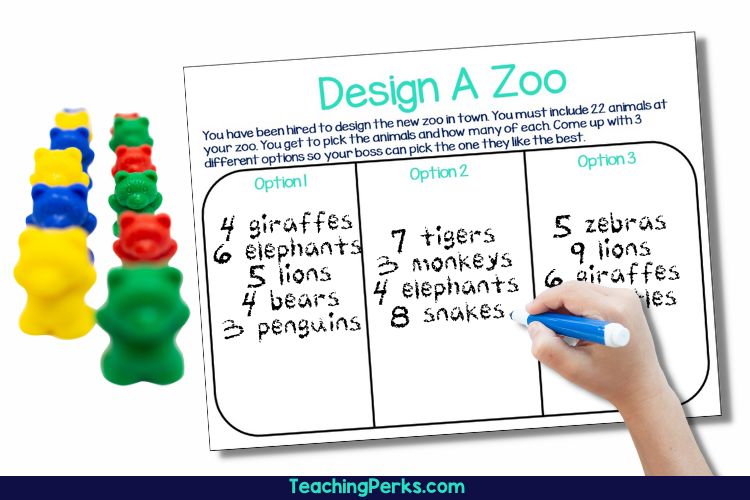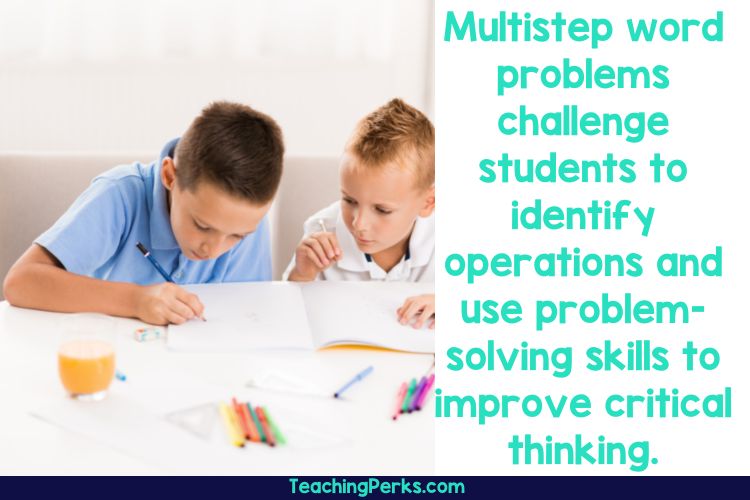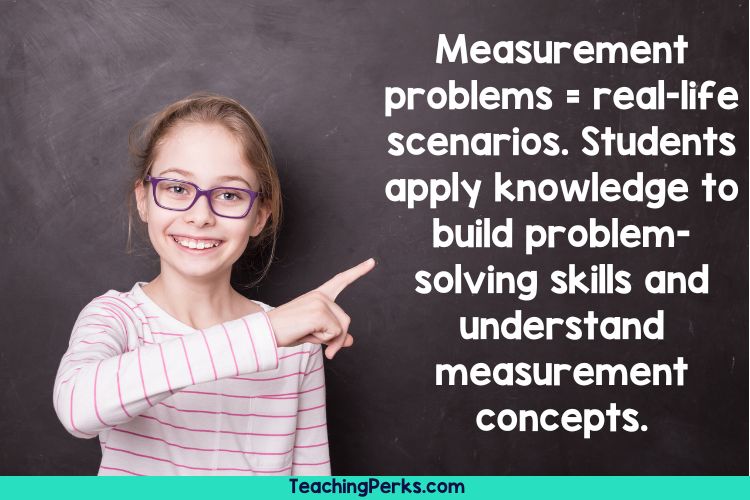Math can be a challenging subject for young students, but incorporating math enrichment activities into word problems for 1st graders can make it more fun and interesting. By doing so, you can help 1st graders develop their problem-solving skills and gain confidence in their mathematical abilities. Here are 9 creative ways to add math enrichment activities to word problems for 1st graders, making math an engaging and enjoyable subject.


Open Ended Word Problems For 1st Graders
In this section, we explore the concept of creating open-ended word problems for 1st graders that have multiple solutions. Word problems that have more than one solution can help students develop critical thinking and problem-solving skills. It allows them to apply different strategies and approaches to reach a solution. These open-ended problems encourage students to think creatively and collaborate with each other to find different solutions.

- Provide a scenario where students have to plan a party. For example, “You are throwing a party for your friends. You have $20 to spend on food and drinks. What will you buy?” Students can come up with different options, such as buying chips and soda or making their own snacks and drinks. You can either give them a menu with food items and their prices or you can allow the students to create the menu and prices. This will add an extra layer of differentiation.
- Challenge students to come up with a word problem of their own that has multiple solutions. For example, “You have 10 toys to give away to your friends. How will you divide the toys so that each friend gets a fair share?” Students can create different scenarios, such as giving each friend two toys or giving some friends more toys than others. Students will decide how many friends they will give toys to and how they will divide them out.
- Have students pretend they work at a jewelry store. You want to make a necklace using beads. You have 30 beads of different colors. You want to use all the beads to make the necklace, but you can use any combination of colors you like. How many different necklaces can you make? Can you make more than one necklace using the same colors in a different order?
- Ask students to design their own zoo. For example, “You are opening a zoo with 15 animals. Which animals will you choose, and how many of each animal will you have?” Students can come up with different combinations of animals and numbers, such as having six lions, three giraffes, two elephants, and four monkeys.

Here are a few other open-ended word problem ideas:
- Imagine you have 12 apples. You want to share them with your friends. How many different ways can you divide the apples among your friends?
- You have a jar with 20 marbles inside. You want to divide the marbles equally in containers. How many marbles can you put in each container? Can you find more than one way to divide the marbles?
- You have 15 toy cars. You want to arrange them on a shelf in rows of 3. How many rows will you need? Can you think of another way to arrange the cars on the shelf in a different number of rows?
- You are planting a garden. You have 25 seeds to plant, and you want to plant them in rows of 5. How many rows will you need? Can you think of another way to plant the seeds in a different number of rows?
Extra Information in Word Problems For 1st Graders
Sometimes word problems 1st graders can include extra information that students need to identify and ignore to solve the problem correctly. By learning to recognize irrelevant information, students will be able to solve word problems more efficiently and effectively, and they will be better equipped to apply their mathematical skills to real-world situations.
Here are a few examples you can use with your 1st graders. You can differentiate the numbers to meet the needs of your students.
- Timmy has 5 marbles and 8 toy cars. He loses 3 of his toy cars. How many toy cars does Timmy have left?
- Jane has 12 crayons and 3 markers. She loses 2 crayons. How many crayons does Jane have left?
- Alex has 7 toy dinosaurs and 4 toy robots. He gives 2 toy dinosaurs to his friend. How many toys does Alex have left?
- Emily has 9 stickers and 5 pencils. She gives 3 stickers to her friend and loses 1 pencil. How many pencils does Emily have left?
- Tom has 10 candy bars and 2 bags of gummies. He eats 3 candy bars. How many candy bars does Tom have left?
Word Problems For 1st Graders With More Than One Operation
Word problems for 1st graders that require more than one operation using addition or subtraction are a great way to challenge students and test their understanding of fundamental concepts. Solving these types of problems requires students to identify the operations needed to solve the problem, use their problem-solving skills, and apply mathematical reasoning to reach the correct answer. These problems are designed to help students develop their critical thinking skills, strengthen their understanding of basic arithmetic, and prepare them for more complex mathematical concepts in the future.

- You have 10 toy cars. You give 3 toy cars to your friend, and your friend gives you 2 toy cars. How many toy cars do you have now?
- There are 15 flowers in a garden. 8 more flowers bloom. How many flowers are there now? Then, 5 flowers are picked. How many flowers are left in the garden?
- You have 20 stickers. Your friend has 5 stickers. You give 3 stickers to your friend, and your friend gives you 2 stickers. How many stickers do you have now?
- You have 12 balloons. You give 4 balloons to your friend. Then, you get 3 more balloons. How many balloons do you have now?
- There are 16 pencils in a box. 5 pencils are taken out of the box. Then, 8 pencils are put into the box. How many pencils are in the box now?
- You have 7 apples. You eat 2 apples. Then, you give 3 apples to your friend. How many apples do you have left?
- There are 14 books on a shelf. 3 more books are added to the shelf. Then, 6 books are taken off the shelf. How many books are on the shelf now?
- You have 9 toy dinosaurs. You give 2 toy dinosaurs to your sister. Then, your mom gives you 4 more toy dinosaurs. How many toy dinosaurs do you have now?
- There are 18 cupcakes at a party. 7 cupcakes are eaten. Then, 4 more cupcakes are brought to the party. How many cupcakes are at the party now?
- You have 5 dollars. You find 3 more dollars. Then, you spend 2 dollars. How much money do you have left?
Enrichment Word Problems for Measurement
The following problems are designed to challenge students’ understanding of measurement concepts and require them to apply their knowledge to real-life scenarios. From calculating the number of boards needed to build a bookshelf to determining how much wrapping paper is needed to cover a present, these problems will help students build their problem-solving skills and enhance their understanding of measurement.

- You are building a bookshelf that is 9 feet long. If each board is 3 feet long, how many boards do you need?
- A box of crayons is 6 inches wide. If you want to line up three boxes of crayons side by side, how wide will they be altogether?
- You are planning a garden bed that is 4 feet long. If each plant needs to be spaced 6 inches apart, how many plants can you fit in the garden bed?
- A piece of ribbon is 18 inches long. If you need to cut it into 6-inch pieces, how many pieces can you cut?
- You are making a recipe that calls for 8 cups of flour. If you only have a 2 cup measuring cup, how many times do you need to fill the measuring cup to get 8 cups of flour?
- You are trying to hang a picture on a wall that is 5 feet wide. If the picture is 1.5 feet wide, how much wall space will be left on either side of the picture?
- You have 18 feet of wrapping paper to wrap presents. If each of your presents are 7 feet wide and you have 3 presents, will you have enough?
- A piece of string is 12 inches long. If you need to cut it into 3-inch pieces, how many pieces can you cut?
- The length of a pencil is 7 inches. How many pencils lined up end to end would it take to measure 21 inches?
- You are cutting a piece of fabric that is 3 yards long. If you need to cut it into 12-inch pieces, how many pieces can you cut from the fabric?

Create Your Own Word Problem
One thing that I love to do with my enrichment group is to ask them to create a word problem on their own. I give them the situation type such as add to, take apart, change unknown, addend unknown, etc. I also give them a limit on how big the numbers they use can be.
Once they have created their word problem, they switch with a partner and solve each other’s problem. Next, they switch back and the owner of the problem must solve it themselves to check their partner’s answer. It motivates the students to get to pick the topic of the word problem and the names used in it.

Enrichment Word Problems For 1st Graders Conclusion
Incorporating math enrichment activities into word problems for 1st graders can make learning more fun and interesting for young students. By creating open-ended word problems, including extra information, and using word problems with more than one operation, students can develop critical thinking, problem-solving, and mathematical reasoning skills.
The word problem unit mentioned in this post includes ten lesson plans, differentiated student work mats, answer keys, differentiated independent practice pages, games with each lesson, questions to ask during lessons, challenges at the end of each lesson, and differentiated word problems to use in each lesson, making math an engaging and enjoyable subject for all learners.
Want to read more on word problems 1st graders? Check out this post on why not teach students to look for keywords when solving word problems or this post on fun and engaging word problems 1st graders activities!

Leave a Reply